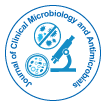

Commentary - (2022)Volume 6, Issue 2
Trypanosoma brucei is a species of parasitic kinetoplastid belonging to the genus Trypanosoma found in sub-Saharan Africa. Unlike other protozoan parasites that normally infect blood and tissue cells, it is exclusively extracellular and inhabits blood plasma and body fluids. It causes fatal vector-borne diseases: African trypanosomiasis, or sleeping sickness, in humans and animal trypanosomiasis, or nagan, in cattle and horses. It is a species complex grouped into three subspecies: Trypanosoma brucei brucei, Trypanosoma brucei gambiense and Trypanosoma brucei rhodesiense. The former is a parasite of non-human mammals and causes nagana, while the latter two are zoonotic, infecting both humans and animals and causing African trypanosomiasis.
Trypanosoma brucei is transmitted between mammalian hosts by an insect vector belonging to various species of the tsetse fly (Glossina). Transmission occurs through bites during blood feeding by insects. Parasites undergo complex morphological changes as they move between insect and mammal during their life cycle. Mammalian bloodstream forms are notable for their cell surface proteins, variant surface glycoproteins that undergo remarkable antigenic variation, allowing persistent evasion of host adaptive immunity leading to chronic infection. Trypanosoma brucei is one of the few pathogens known to cross the blood-brain barrier. There is an urgent need to develop new drug therapies because current treatments can have severe side effects and can be fatal for the patient.
Infection and pathogenicity
The insect vectors for Trypanosoma brucei are various species of the tsetse fly (genus Glossina). The main vectors of Trypanosoma brucei. gambiense, which causes West African sleeping sickness, are G. palpalis, G. tachinoides and G. fuscipes. While the main vectors of Trypanosoma brucei. rhodesiense, causing East African sleeping sickness, are G. morsitans, G. pallidipes and G. swynnertoni. Animal trypanosomiasis is transmitted by a dozen species of Glossina.
In the later stages of Trypanosoma brucei infection in the mammalian host, the parasite can migrate from the bloodstream and also infect the lymph and cerebrospinal fluid. It is under this tissue invasion that the parasites produce sleeping sickness.
In addition to the main form of transmission via the tsetse fly, Trypanosoma brucei can be transmitted between mammals through the exchange of body fluids such as blood transfusion or sexual contact, although this is considered rare. Newborns can be infected (by vertical or congenital transmission) from infected mothers.
Structure
Trypanosoma brucei is a typical unicellular eukaryotic cell and measures 8 μm to 50 μm in length. It has an elongated body that has a streamlined and tapered shape. Its cell membrane (called the pellicle) encloses cell organelles, including the nucleus, mitochondria, endoplasmic reticulum, Golgi apparatus, and ribosomes. In addition, there is an unusual organelle called the kinetoplast, which is a complex of thousands of mitochondria. The kinetoplast lies close to the basal body, with which it is indistinguishable under the microscope. A single flagellum emerges from the basal body and runs towards the anterior end. Along the surface of the body, the flagellum is attached to the cell membrane and forms an undulating membrane. Only the tip of the flagellum is free at the anterior end. The cell surface of the bloodstream form is characterized by a dense coat of Variant Surface Glycoproteins (VSGs), which is replaced by an equally dense coat of procyclins when the parasite differentiates into the procyclic phase in the midgut of the tsetse fly.
Trypanosomatids show several different classes of cellular organization, two of which are adopted by Trypanosoma brucei at different stages of the life cycle,
• Epimastigote, which is found in the tsetse fly. Its kinetoplast and basal body lie in front of the nucleus, with a long flagella attached along the cell body. The flagellum starts from the center of the body.
• A trypomastigote that occurs in mammalian hosts. The kinetoplast and basal body are behind the nucleus. The whip arises from the rear end of the body.
Citation: Ficy V (2022) Infection and Pathogenicity of Trypanosoma brucei and its Structure. J Clin Microbiol Antimicrob. 06: 134
Received: 15-Jul-2022, Manuscript No. JCMA-22-20591; Editor assigned: 19-Jul-2022, Pre QC No. JCMA-22-20591 (PQ); Reviewed: 02-Aug-2022, QC No. JCMA-22-20591; Revised: 09-Aug-2022, Manuscript No. JCMA-22-20591 (R); Published: 16-Aug-2022 , DOI: 10.35248/JCMA.22.6.134
Copyright: © 2022 Ficy V. This is an open-access article distributed under the terms of the Creative Commons Attribution License, which permits unrestricted use, distribution, and reproduction in any medium, provided the original author and source are credited.